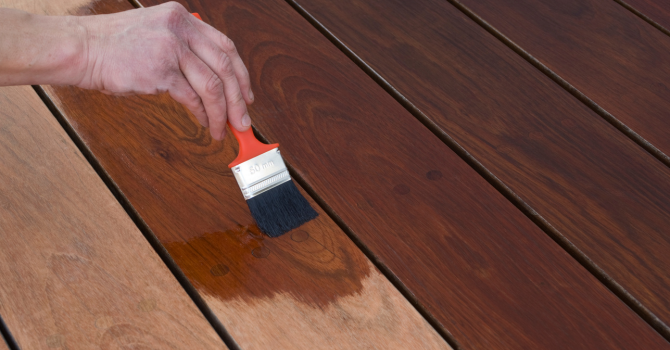Are you looking for a contractor?
Submit our quick form and get quotes now!
Table of Contents
5 min read
How to Knock Down a Nonbearing Wall


5 min read
How to Knock Down a Nonbearing Wall
Interior renovationsHow to Knock Down a Nonbearing Wall
If knocking down a load-bearing wall is no simple matter, then knocking down a non-load-bearing wall isn't a walk in the park either. To know just how to carry out this kind of task, and achieve a decent result, here are the necessary steps and precautions to follow.
Knocking Down a Nonbearing Wall: What You Need to Know
Identifying a nonbearing wall

Before proceeding with this type of project, ensure that the wall that’s to be knocked down isn't a load-bearing wall. To do so, note that the thinner the wall, the more likely it's to be a non-load-bearing wall. You can also knock on the wall: If it sounds hollow, it can't be a load-bearing wall.
It's also important to know that load-bearing walls are usually either exterior walls or core interior walls, which are directly connected to the structure, the latter also known as "cross walls.”
Generally, a brick or concrete wall is load-bearing and will also be thicker. If the wall you want to knock down is located in the basement, note that a load-bearing wall is usually parallel to the main beam. However, these indications aren't absolute and can be misleading. To be certain you're proceeding correctly, check the house's blueprints or call in a specialist.
Check what lies behind the wall
Now that you're fully confident about the nature of the wall you plan to knock down, make a small opening in the drywall with a box cutter. This way, you'll be able to determine what's behind it before you officially start tearing it down. This step will allow you to verify that no electrical or plumbing systems are hidden in the wall. Should this be the case, you'll need to call in the specialists to move these fixtures.
Moreso, you can always resort to the house's construction plan if you want additional information regarding the location of these pipes within your walls.
Planning the project

Before you start tearing down the wall, wear a dust mask, work gloves, and protective goggles to ensure that you’re fully protected, avoid breathing in dust particles, and your eyes are adequately shielded from airborne particles. Now, cut off gas, electricity, or water supplies to avoid any unfortunate accident or expensive damage.
Next, tape polythene (vapour barriers) to close off openings to adjacent rooms and prevent dust from spreading into them.
Then, if necessary, pull back the baseboards nearest the wall. Do the same with any mouldings situated near the bottom of said wall (if any) and the ones around the wall. Remove electrical outlets and clear casings from electrical boxes.
Are you looking for experts to tear down a wall in your house?
Fill out our form to receive quotes from certified contractors!
How to Tear Down a Nonbearing Wall

Now it's time to knock down the wall. Use a box cutter to sever the edges of the wall (ceiling, floor, and sides) from the other adjacent walls. This'll allow you to tear down the wall without damaging the other walls. Break through the drywall with a small sledgehammer and proceed from top to bottom. You can also use a hammer.
Next, take out all the insulation material from the wall and dispose of it in the garbage. Lastly, remove all the drywall anchors. The interior studs will be interlocked and crimped or screwed to the tracks (both at the ceiling and floor level).
If the studs are screwed in, unscrew the anchors and rotate the stud on itself to release it from the tracks. Then, remove it. If, on the other hand, the studs are crimped, you'll have to cut them off with a nibbler at the edge of the floor and ceiling tracks.
Repair damage to floor and ceiling
In most cases, regardless of your technique, there's a good chance that knocking down a wall will damage the floor and ceiling.
As for the ceiling, some touch-ups will be required. If the result gives you the impression that the ceiling isn't the same colour – that there's a slight colour demarcation – then paint the whole ceiling over. Trust us, the ever-present colour demarcation will bother you soon enough. As for the floor, unfortunately, it'll have to be completely replaced, especially if the two rooms that have now become one have different flooring. If this isn't the case, you can repair the floor by patching it with a piece of the same flooring. But don't expect the results to be seamless.
Few Precautions When Knocking Down a Nonbearing Wall
If you're working on the second floor, make sure you set up braces at all times. This will prevent the floor from carrying the entire weight of the floor unaided. In addition, note that a non-load-bearing wall can, over time, become load-bearing due to the weakening of the structure. Given this possibility, the braces will serve as a support and will prevent the wall from bearing a load greater than its capacity. It's therefore a safety precaution that shouldn't be overlooked.
Second, keep in mind that a non-load-bearing wall may still have a load-bearing beam. Considering this possibility, be extremely careful when you tear down the wall. Any damage to the beam could have dire consequences.
Note that, if you damage a load-bearing beam, the undamaged portion of the beam must be at least 2/3 of the surface area to retain its load-bearing capacity. If you've got a 3-inch wide load-bearing beam, any notch or drilled hole larger than an inch in width will affect its load-bearing capacity. For a non-load-bearing beam, the undamaged portion of the beam’s width should always be a minimum of 40 millimetres. If you cut in a load-bearing beam, cease work immediately and call in a professional.
An overview of the steps to break down a non-load-bearing wall:
Steps | Description |
Identify the nonbearing wall |
|
Check what lies behind that wall |
|
Planning the project |
|
How to take down the wall |
|
Repair damage to floor and ceiling |
|
Few precautions |
|
Get 3 renovation quotes to knock down your nonbearing wall
RenoQuotes.com can help you get quotes to knock down a nonbearing wall. By submitting your project, we’ll put you in contact with top-rated contractors. Fill in the form on the homepage (it only takes a few minutes), and you will get estimates from trusted professionals.
Dial 1-844 828-1588 to speak with one of our customer service representatives.
Last modified 2023-11-07
Looking for something else?
Related articles
The latest industry news, interviews, technologies, and resources.

RenoQuotes.com • 07 Nov 2023
If you’re looking to let a little bit of light in between two otherwise dull or dingy rooms, or you’re looking for an alternative to the classic sliding door, then you might be in the market for French doors. These doors can be a beautiful addition to both classic and modern home décors.

Amanda Harvey • 07 Nov 2023
If your home décor embraces the rustic or the warm, then chances are you’re looking for ways to incorporate these details into all the rooms of your home. This is especially true of the kitchen, where it’s likely a plethora of stainless steel appliances live. If you’re looking for more of a down to earth vibe, have you considered a butcher block counter top?

Amanda Harvey • 07 Nov 2023
Tiles come in all kinds of colours, shapes and sizes, keeping bathroom floors waterproof and beautiful. However, like any home surface, they need proper maintenance to uphold their elegance while preventing cracking, mould or mildew growth.

RenoQuotes.com • 07 Nov 2023
Painting the façade of a house can be a long and arduous process. However, if the work is carried out well, the transformation can be rather drastic! When a quality product is applied to a well-prepared surface, said painted surface will have a longer service life.

Cynthia Pigeon • 07 Nov 2023
Without a doubt, one of the main elements to check when buying a home is its thermal design power. Besides ensuring optimal indoor temperatures, it minimizes heating and air conditioning needs and makes the house impervious to air and water seepage.